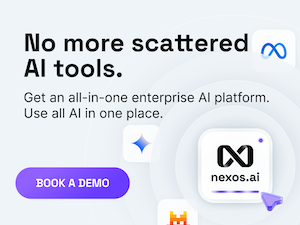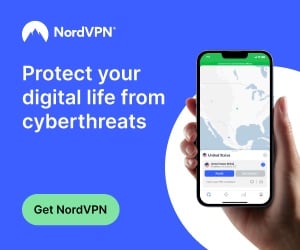Powering the Solar Energy Industry’s Digital Transformation with a Headless CMS
The solar energy market is expanding. Companies and final consumers seek green energy. However, a growing market depends on digital transformation. Digital transformation gives a deeper understanding of customer needs/products and services digitally, access to software that allows for more comprehensive enterprise solutions, and an extensive reliance on digital marketing efforts. However, the solar energy industry requires a headless CMS for scalable solutions to be engaging and high performance. Whereas most automated CMS solutions connect content management to one frontend in which it is rendered and experienced, a Headless CMS eliminates that connection.
Thus, solar energy companies can access and manage the same content across all their branded websites, apps, IoT integrations, and digital touchpoints. It creates an ecosystem where a company can essentially educate the consumer on solar energy, sell solar products and services, and access live energy reports without concern for pipeline restrictions down the road. This post explores how Headless CMS solutions are transforming the solar energy industry to give solar companies the ability to use customer interactions and marketing opportunities and pipeline expansion in a continuously connected digital landscape.
Enhancing Customer Education and Awareness
Consumer awareness is a critical factor when it comes to solar energy consumption. Should consumers be intrigued, however, they require educational, sales-free content that entices them about solar energy, the advantages of solar energy, costs, and the technology behind how it works. A Headless CMS affords solar energy companies the opportunity to create and manage all content across any digital outlet at the solar energy company's disposal to educate consumers. Now, picture a solar company. A Headless CMS would allow this solar company to house its blogs, FAQs, and guides without worrying about the front end; this information can be pushed and readily available through the website, any applications, and even smart home integration.
Customers in the market for solar panels will find content-driven recommendations, links to case studies, and even assessments of loan possibilities. All content APIs of a Headless CMS make this happen. In addition, as the industry shifts, required communication about research and findings, technological advances, government subsidies, and policy shifts needs to be disseminated. A Headless CMS gives the content team the ability to fluidly change any and all information required so that consumers are abreast of market shifts without extensive backend changes. An easy-to-mold, adjustable CMS minimizes the effort to keep consumers informed, which ultimately legitimizes credibility and gets them on board with the renewable energy solution much quicker.
Creating Engaging, Data-Driven Digital Experiences
Every day, the solar industry becomes increasingly data-oriented. Companies measure energy output through real-time data collection and improve grid efficiency, detailed reporting keeps clients up to date with their solar investments. A Headless CMS allows for the effortless integration of energy-driven data into aesthetically pleasing digital experiences, rendering complicated ideas into easier-to-understand visual representations. Similarly, a solar company with real-time tracking abilities can use a Headless CMS to fill various websites and applications with energy updates.
Customers are notified with real-time discoveries, historical savings, and their real-time impact on the world around them. Between the reactive panels, daily energy adjustments recommended based upon personalized suggestions and content recommendations fostered by the CMS based upon AI assessments, the solar customer enjoys a dynamic and informative online experience that allows them to make the best use of solar energy. The content fostered through a Headless CMS is omnipresent, situational, and responsive to integration requirements to better the experience.
Improving Digital Marketing and Lead Generation
Digital marketing solutions for lead generation and conversion are essential for solar energy companies. A headless CMS allows the marketing department to develop, modify, and publish custom content across multiple channels in a non-disruptive yet on-brand fashion. The ability to utilize a headless CMS remedies the challenges a marketing department might face with traditional CMS options. Whether access is limited via templating or integration and third-party options require too much technical expertise, a solar energy company could find itself in a predicament when it's ready to launch that campaign everyone wants.
However, with no link to a front end, a headless CMS allows solar energy companies to create and deploy SEO-content landing pages for conversion, as well as access to marketing automation for paid, email, and social campaigns to pique interest and generate leads. Companies in the solar energy industry seeking to create new leads such as a new solar panel system for your residential needs can utilize a Headless CMS to quickly spin up various landing pages in seconds, geo-target content that changes based on where someone is located, and support integration with all necessary CRM and marketing automation software. Therefore, would-be customers get precisely what they need content-wise, which boosts the new lead conversion rate. Ultimately, solar companies can use a Headless CMS to create new leads quicker, automate content efficiencies, and expand digital marketing needs.
Scaling Content for a Global Solar Market
As companies continue to operate on an international level solar power companies desire content solutions that support multilingual, multi-regional endeavors. From content management and content distribution perspectives, a Headless CMS supports this need as a technical solution that does not require enterprises to duplicate content when entering different markets. A more standard CMS requires that enterprises build an entirely separate site for different languages or geographic markets. A Headless CMS creates everything in one place, offers translation options, and allows an enterprise to rapidly and efficiently push content to as many sites, apps, and digital locations as required.
For instance, a solar company going international and expanding into Europe can use a Headless CMS to create/manage its translated landing pages, as well as generate compliance information for energy regulations or changes in regulatory compliance that require updates the translations are in its voice as a solar company with consistent branding. Different consumers will see different, yet relevant solar company content globally based upon energy regulations, energy incentives, and solar products based upon climate; yet the experience is cohesive. Solar companies can go international with a consistent, evolving, and API-driven CMS for content generation and brand integrity.
Future-Proofing the Solar Industry’s Digital Transformation
The solar energy marketplace is constantly evolving from technological breakthroughs to regulatory changes to better energy efficiencies. Thus, a Headless CMS keeps solar companies informed about it all and provides the means of integration without having to reconstruct their entire web presence. For example, with an API delivery of content, companies can easily welcome an IoT energy grid, AI-powered energy efficiency recommendations, or even a blockchain payment system for payments on solar use and installation directly onto their sites. This type of content management system keeps solar energy companies in the loop with all the latest offerings to provide their clients with cutting-edge options. Envision a solar company that does energy forecasting using AI.
The capability to forecast will come from a Headless CMS that can store that content now and render it later machine-learned recommendations for users on how they can save energy automatic recommendations of potential savings based on daily weather forecasts and immediate grid demand will enhance user experience and energy conservation. Solar is the future of energy, and with a Headless CMS, companies won't have to fret about their digital transformation expenditure being merely on the cutting edge for one or two years and then done.
Streamlining Solar Project Management with a Headless CMS
The interplay of teams, project milestones and deliverables, and generation and consumption regulations are all required when overseeing a solar energy project. A Headless CMS could assist in the management of such an energy project by offering a collaborative hub for energy project documentation, timetables, and energy project adjustments while keeping all necessary parties on the same page. For example, a solar enterprise that manages multiple residential and commercial projects simultaneously can utilize a Headless CMS to create and share project-related content for installation schedules, requirements, safety protocols, and anticipated future service requirements.
Every party involved from engineers to contractors to end customers has access to the same real-time information without competing channels of communication. In addition, coupling a Headless CMS with project management platforms Trello, Asana, or Jira seamlessly alerts a solar enterprise to those actively engaged with project updates, helps monitor project completion, and adds an additional layer of efficiency and accuracy for those providing renewable energy solutions.
Improving Customer Support and Self-Service Portals
With solar becoming more mainstream, it's only natural that customers have inquiries about installation, maintenance, and energy savings. Welcome a Headless CMS solar company customer support. If it's not self-service portals and knowledge bases, it's even AI-driven chatbots that provide customers with the information they seek when they want it, without waiting. For instance, a solar company could utilize a Headless CMS to create an evergreen FAQ section where customers search for answers on solar financing, solar warranties, tax credits, etc. The same information gets pushed to chatbots, email drip campaigns, and mobile so that no matter which path the customer travels down to seek assistance, he or she receives the same answer. This eases the burden on customer service teams and enables customers to self-solve, increasing customer satisfaction and turnaround time for issues while guaranteeing a more effective self-solving solution.
Driving Innovation with AI and Smart Energy Integration
Solar energy is sustainable based on AI/machine learning and smart grid integration. Thus, a Headless CMS provides the solar company with an AI based solution via the rendering of energy management systems and consumer-focused data predictive analytics so that consumers become more educated about how and when to use energy. For example, if a solar company uses AI to better understand the patterns of how and when people use energy, they will have a Headless CMS that can render real-time data on user dashboards. Users could be notified about the best times to use energy to save money and increase productivity. With AI energy management and integration with a Headless CMS solar professionals can offer clean, intelligent solutions to assist the planet in generating and assessing renewable energy generation and management.
Enhancing B2B Partnerships and Enterprise Collaboration in the Solar Industry
Ongoing communication is vital between a partnership ecosystem of manufacturers, suppliers, installers, and energy companies to ensure the solar energy market remains successful. A Headless CMS fosters partnership. Partners can create and disseminate content with access to required technical documentation, reports, and more. For instance, a solar panel manufacturer needs to communicate with its international distributors. A Headless CMS allows the solar panel manufacturer to create and maintain product specifications, installation guides, and marketing materials so that its distributors always have access to current, updated information.
It fosters communication, branding uniformity, and simplifies the sale. In addition, a Headless CMS plays into CRM and B2B integration so that content can be disseminated across various channels automatically, engagement and partnership tracking facilitated for more strategic, research-driven endeavors. Ultimately, solar energy companies will be able to expand their own businesses and access larger audiences for the acceptance of renewable energy.
Conclusion
The solar energy market is going digital. Businesses are in competition and creation modes, looking for all the newest content management systems that promote customer engagement, scalability options, and internal efficiencies. A Headless CMS is just another gear in the machine solving content management challenges for solar businesses, enhancing digital marketing efforts, and making real-time energy data a fluid, engaging experience for the consumer. Therefore, solar energy companies should turn to a Headless CMS to create a future-ready experience because of personalized omnichannel delivery, multilingual capabilities, and API integrations that help engage and ease customers to transition to clean energy.
Whether the industry is going into the future with IoT integrated solar grids or AI managed microgrids and global expansion, solar companies that choose a Headless CMS solution will always be ahead of the future. Solar energy companies should look to Headless CMS solutions to build a sustainable and technologically advanced future because it provides transparent brand engagement, more effective digital experiences, and clean energy solutions that are effective internationally.
Also read
- How to Reduce Downtime in Solar Operations?
- Hyperparameter Tuning Good Practices for Robust Predictive Models
- 5 Critical Metal Forming Processes in Solar Panel Manufacturing
- Maximizing Efficiency with Low-Maintenance Solar Panel Systems
- Cyber Hygiene for Solar Companies: Protecting Your Data from Email Threats


